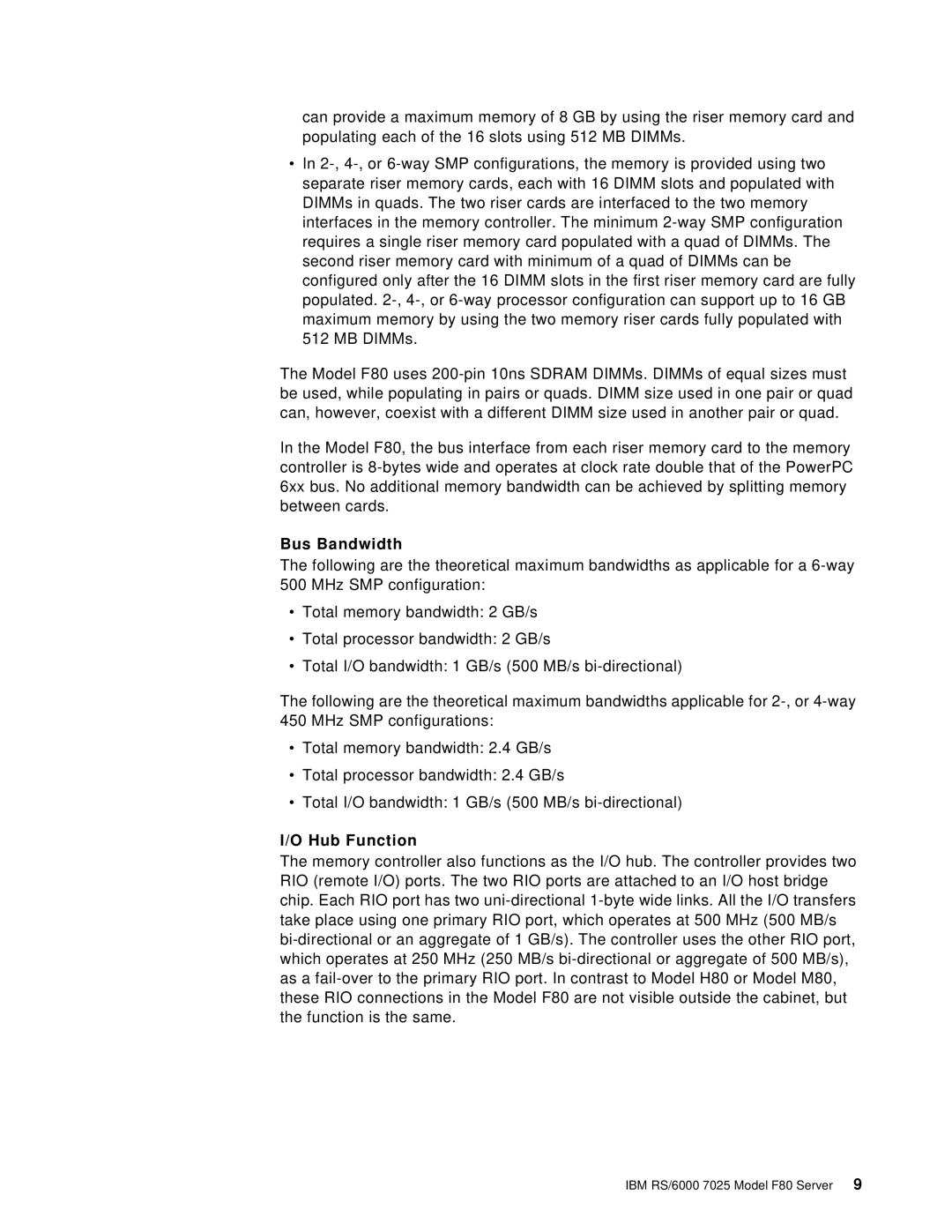can provide a maximum memory of 8 GB by using the riser memory card and populating each of the 16 slots using 512 MB DIMMs.
•In 2-, 4-, or 6-way SMP configurations, the memory is provided using two separate riser memory cards, each with 16 DIMM slots and populated with DIMMs in quads. The two riser cards are interfaced to the two memory interfaces in the memory controller. The minimum 2-way SMP configuration requires a single riser memory card populated with a quad of DIMMs. The second riser memory card with minimum of a quad of DIMMs can be configured only after the 16 DIMM slots in the first riser memory card are fully populated. 2-, 4-, or 6-way processor configuration can support up to 16 GB maximum memory by using the two memory riser cards fully populated with 512 MB DIMMs.
The Model F80 uses 200-pin 10ns SDRAM DIMMs. DIMMs of equal sizes must be used, while populating in pairs or quads. DIMM size used in one pair or quad can, however, coexist with a different DIMM size used in another pair or quad.
In the Model F80, the bus interface from each riser memory card to the memory controller is 8-bytes wide and operates at clock rate double that of the PowerPC 6xx bus. No additional memory bandwidth can be achieved by splitting memory between cards.
Bus Bandwidth
The following are the theoretical maximum bandwidths as applicable for a 6-way
500 MHz SMP configuration:
•Total memory bandwidth: 2 GB/s
•Total processor bandwidth: 2 GB/s
•Total I/O bandwidth: 1 GB/s (500 MB/s bi-directional)
The following are the theoretical maximum bandwidths applicable for 2-, or 4-way
450 MHz SMP configurations:
•Total memory bandwidth: 2.4 GB/s
•Total processor bandwidth: 2.4 GB/s
•Total I/O bandwidth: 1 GB/s (500 MB/s bi-directional)
I/O Hub Function
The memory controller also functions as the I/O hub. The controller provides two RIO (remote I/O) ports. The two RIO ports are attached to an I/O host bridge chip. Each RIO port has two uni-directional 1-byte wide links. All the I/O transfers take place using one primary RIO port, which operates at 500 MHz (500 MB/s bi-directional or an aggregate of 1 GB/s). The controller uses the other RIO port, which operates at 250 MHz (250 MB/s bi-directional or aggregate of 500 MB/s), as a fail-over to the primary RIO port. In contrast to Model H80 or Model M80, these RIO connections in the Model F80 are not visible outside the cabinet, but the function is the same.
